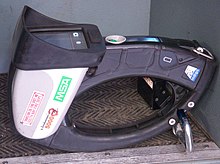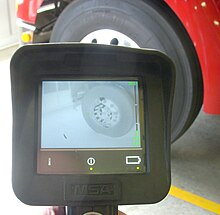
Infrared is electromagnetic radiation (EMR) with wavelengths longer than that of visible light but shorter than microwaves. The infrared spectral band begins with waves that are just longer than those of red light, the longest waves in the visible spectrum, so IR is invisible to the human eye. IR is generally understood to include wavelengths from around 750 nm to 1000 μm. IR is commonly divided between longer-wavelength thermal IR, emitted from terrestrial sources, and shorter-wavelength IR or near-IR, part of the solar spectrum. Longer IR wavelengths (30–100 μm) are sometimes included as part of the terahertz radiation band. Almost all black-body radiation from objects near room temperature is in the IR band. As a form of electromagnetic radiation, IR carries energy and momentum, exerts radiation pressure, and has properties corresponding to both those of a wave and of a particle, the photon.

A firefighter is a first responder trained in firefighting, primarily to control and extinguish fires that threaten life and property, as well as to rescue persons from confinement or dangerous situations. Male firefighters are sometimes referred to as firemen.
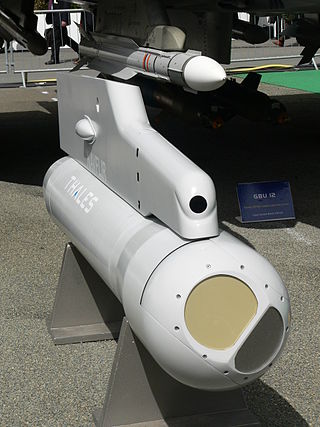
Forward-looking infrared (FLIR) cameras, typically used on military and civilian aircraft, use a thermographic camera that senses infrared radiation.

A thermographic camera is a device that creates an image using infrared (IR) radiation, similar to a normal camera that forms an image using visible light. Instead of the 400–700 nanometre (nm) range of the visible light camera, infrared cameras are sensitive to wavelengths from about 1,000 nm to about 14,000 nm (14 μm). The practice of capturing and analyzing the data they provide is called thermography.
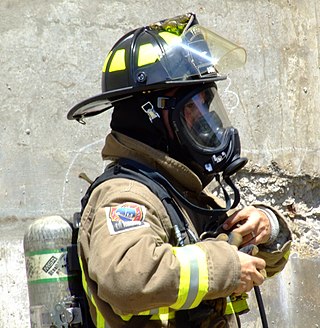
A self-contained breathing apparatus (SCBA) is a device worn to provide an autonomous supply of breathable gas in an atmosphere that is immediately dangerous to life or health. They are typically used in firefighting and industry. The term self-contained means that the SCBA is not dependent on a remote supply of breathing gas. If designed for use under water, it is also known as a scuba set. When not used underwater, they are sometimes called industrial breathing sets. Some types are also referred to as a compressed air breathing apparatus (CABA) or simply breathing apparatus (BA). Unofficial names include air pack, air tank, oxygen cylinder or simply pack, which are mostly used in firefighting.

Infrared thermography (IRT), thermal video and/or thermal imaging, is a process where a thermal camera captures and creates an image of an object by using infrared radiation emitted from the object in a process, which are examples of infrared imaging science. Thermographic cameras usually detect radiation in the long-infrared range of the electromagnetic spectrum and produce images of that radiation, called thermograms. Since infrared radiation is emitted by all objects with a temperature above absolute zero according to the black body radiation law, thermography makes it possible to see one's environment with or without visible illumination. The amount of radiation emitted by an object increases with temperature; therefore, thermography allows one to see variations in temperature. When viewed through a thermal imaging camera, warm objects stand out well against cooler backgrounds; humans and other warm-blooded animals become easily visible against the environment, day or night. As a result, thermography is particularly useful to the military and other users of surveillance cameras.

Firefighting is a profession aimed at controlling and extinguishing fire. A person who engages in firefighting is known as a firefighter or fireman. Firefighters typically undergo a high degree of technical training. This involves structural firefighting and wildland firefighting. Specialized training includes aircraft firefighting, shipboard firefighting, aerial firefighting, maritime firefighting, and proximity firefighting.

A PASS device, also known as a Distress Signal Unit (DSU) or ADSU, is a personal safety device used primarily by firefighters entering a hazardous or Immediately Dangerous to Life and Health (IDLH) environment such as a burning building. The PASS device sounds a loud (95 decibel) audible alert to notify others in the area that the firefighter is in distress. On a fireground, the sound of an activated PASS device indicates a true emergency and results in an immediate response to rescue the firefighter(s) in distress. In the United States, the National Fire Protection Association sets standards for PASS devices in NFPA 1982.
A helmet camera, otherwise known as a micro video camera, is an action camera, usually a closed circuit television camera, attached to a helmet allowing someone to make a visual record from their point of view (POV), while keeping their hands and vision free.
This is a glossary of firefighting equipment.
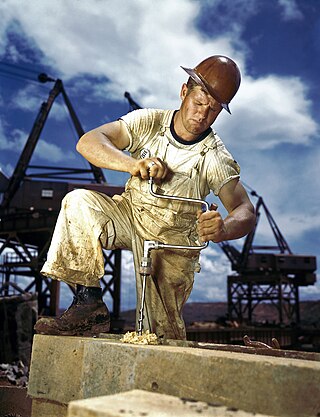
Mine Safety Appliances, or MSA Safety Incorporated, is an American manufacturer and supplier of safety equipment designed for use in a variety of hazardous conditions in industries such as construction, the military, fire service, and chemical, oil, and gas production.

An infrared thermometer is a thermometer which infers temperature from a portion of the thermal radiation sometimes called black-body radiation emitted by the object being measured. They are sometimes called laser thermometers as a laser is used to help aim the thermometer, or non-contact thermometers or temperature guns, to describe the device's ability to measure temperature from a distance. By knowing the amount of infrared energy emitted by the object and its emissivity, the object's temperature can often be determined within a certain range of its actual temperature. Infrared thermometers are a subset of devices known as "thermal radiation thermometers".

For centuries, firefighters have worn helmets to protect them from heat, cinders and falling objects. Although the shape of most fire helmets has changed little over the years, their composition has evolved from traditional leather to metals, to composite helmets constructed of lightweight polymers and other plastics.

Bunker gear is the personal protective equipment (PPE) used by firefighters. The term is derived from the fact that the trousers and boots are traditionally kept by the firefighters bunk at the fire station to be readily available for use.

Firefighter rehabilitation is a vital firefighting service, providing firefighters and other emergency personnel with immediate medical attention including rehydration, treatment for smoke inhalation, and the prevention of life-threatening conditions such as heatstroke and heart attack after working at the scene of an incident. Firefighter rehabilitation can include a variety of things from a simple check up to deciding whether or not the firefighter needs to see a doctor. The rehabilitation area is set up in a safe location near the incident so that it can be accessible to any emergency responders who may need it.

A fire proximity suit is a suit designed to protect a firefighter or volcanologist from extremely high temperatures. They were first designed and used in the 1930s. Originally made of asbestos fabric, current models use vacuum-deposited aluminized materials.
The use of a cutting extinguisher is a fire extinguishing technique that combines abrasive waterjet cutting with water spray extinguishing, through a single handpiece or nozzle. The fire-fighter approaches the fire from outside the main fire area, then uses the cutting action to drill a small hole through a door or wall. Switching to a water spray then allows the fire to be fought, as with a conventional fog nozzle.
Thermoteknix Systems Ltd – a British manufacturer of infrared (IR) imaging and thermal measurement based hardware, systems and software applications. Designs and manufactures thermal imaging and temperature screening solutions for industry, defence and security.

New York City Fire Department Rescue Company 1, also known as Rescue 1, is one of five special operations rescue companies of the New York City Fire Department (FDNY) that responds to rescue operations that require specialized equipment and training. It was organized on March 8, 1915.
3M Scott Fire & Safety is an American manufacturer of respiratory and personal protective equipment including supplied air and air purifying respirators, compressors, gas detection systems and thermal imaging cameras. The company was founded in 1932 as Uniloy Accessories Corporation, and is located in Monroe, North Carolina. In 2001 it was acquired by Tyco International and in 2017 it was acquired by 3M.
